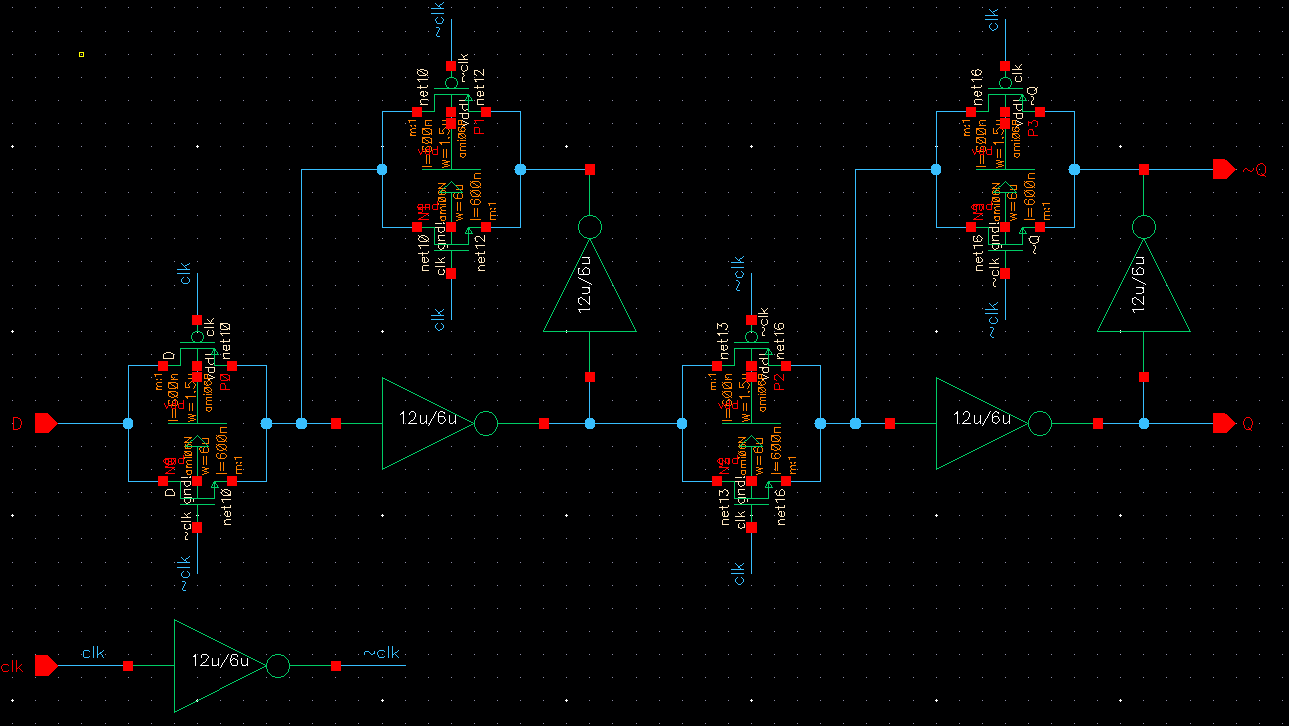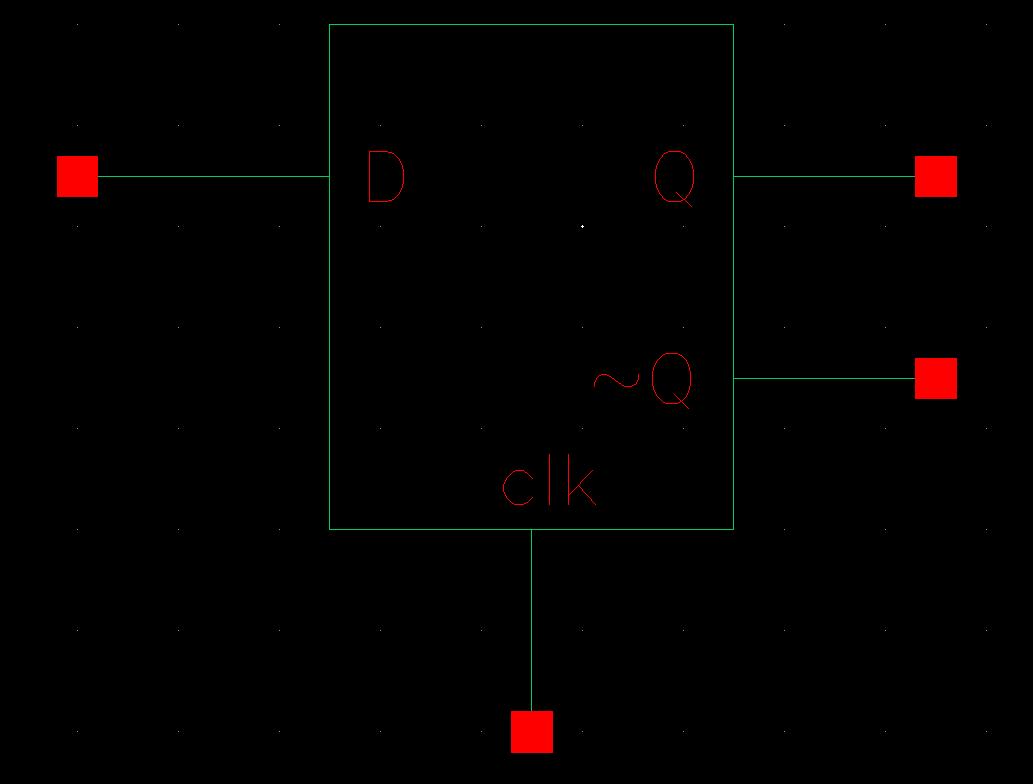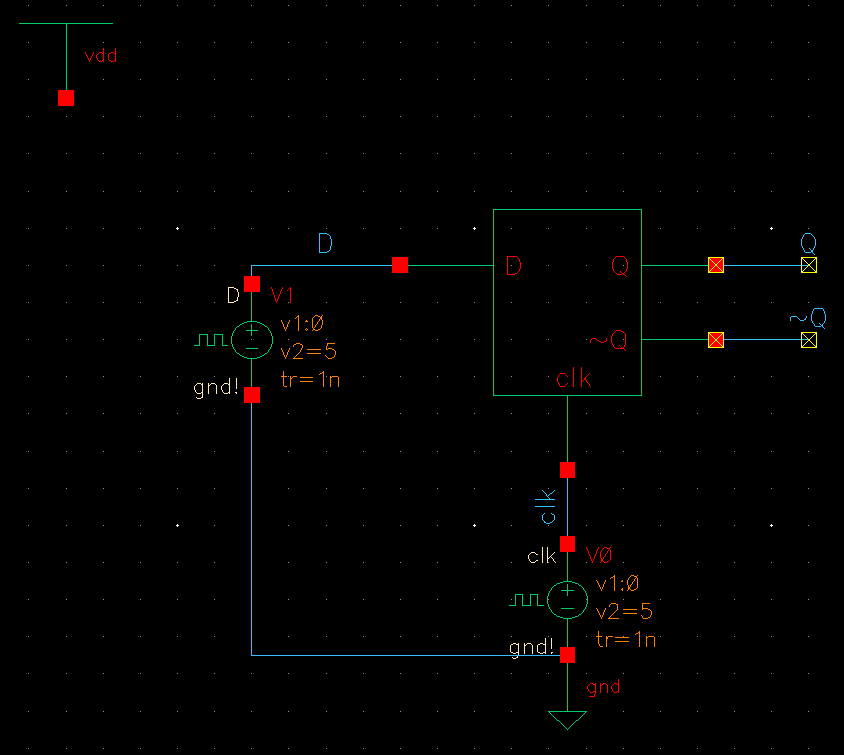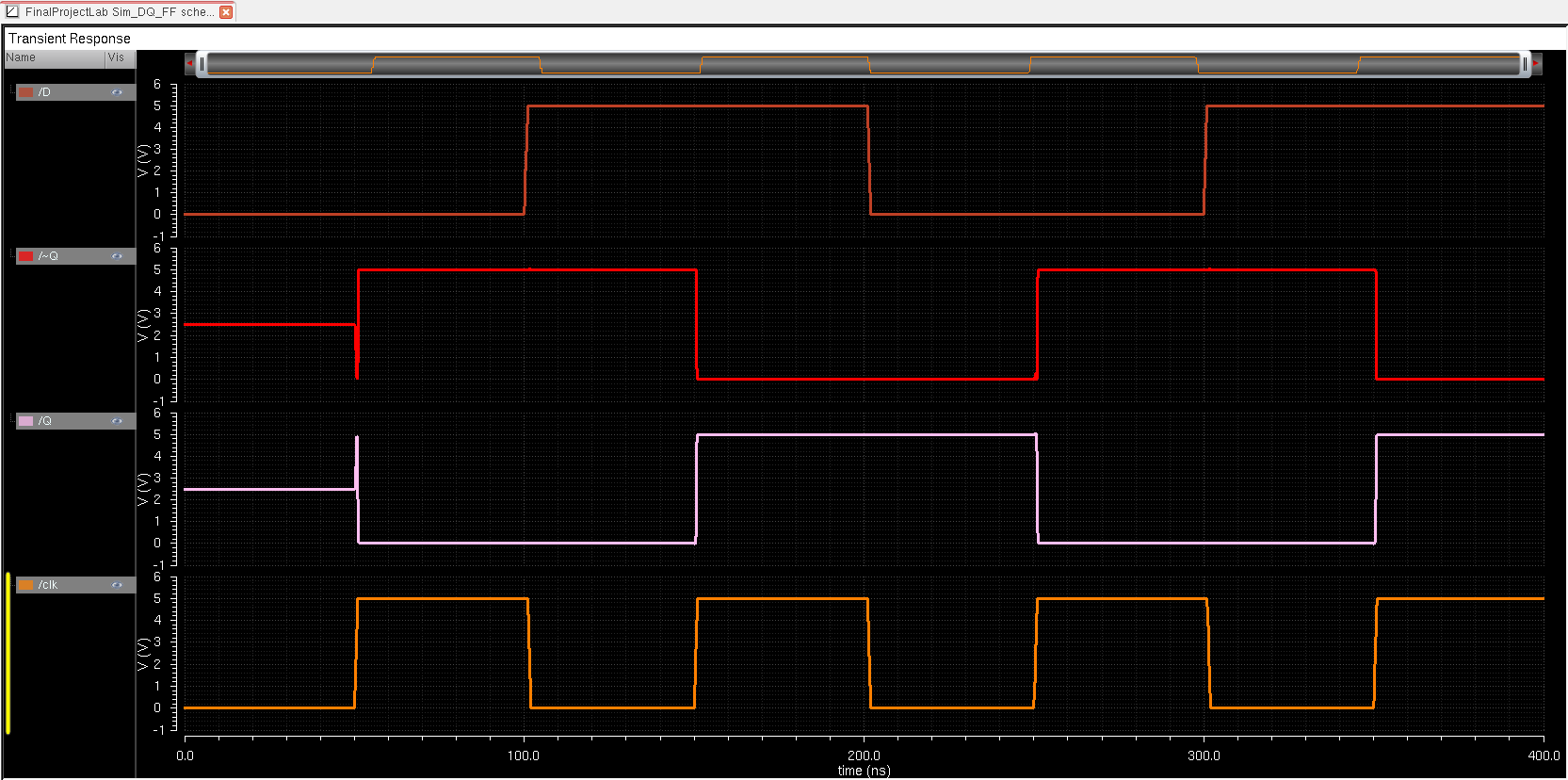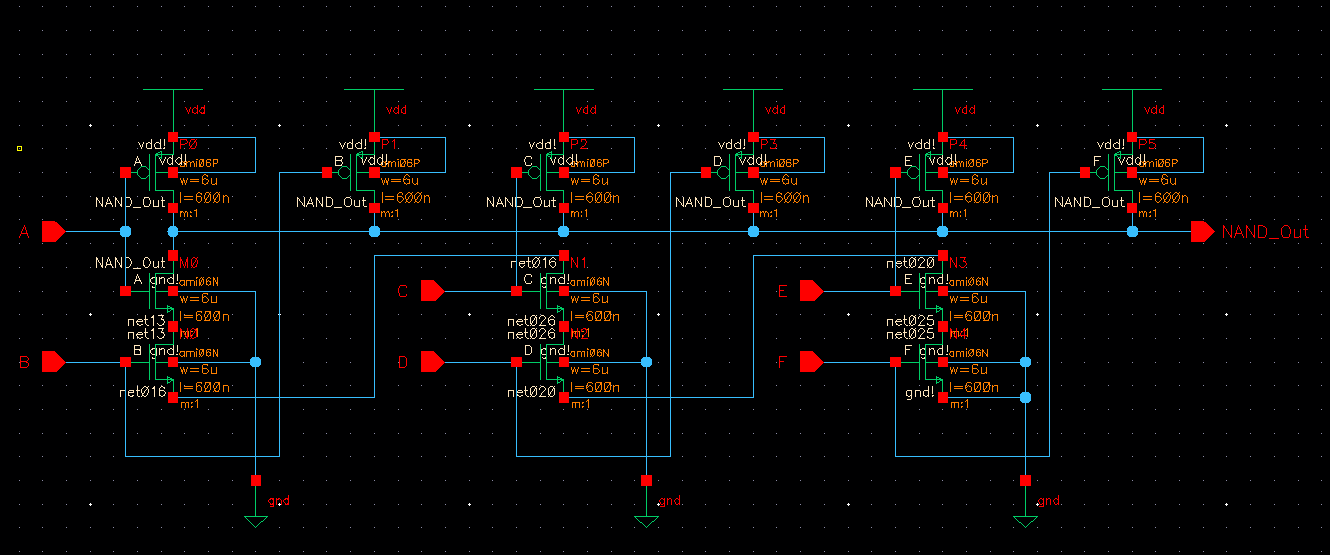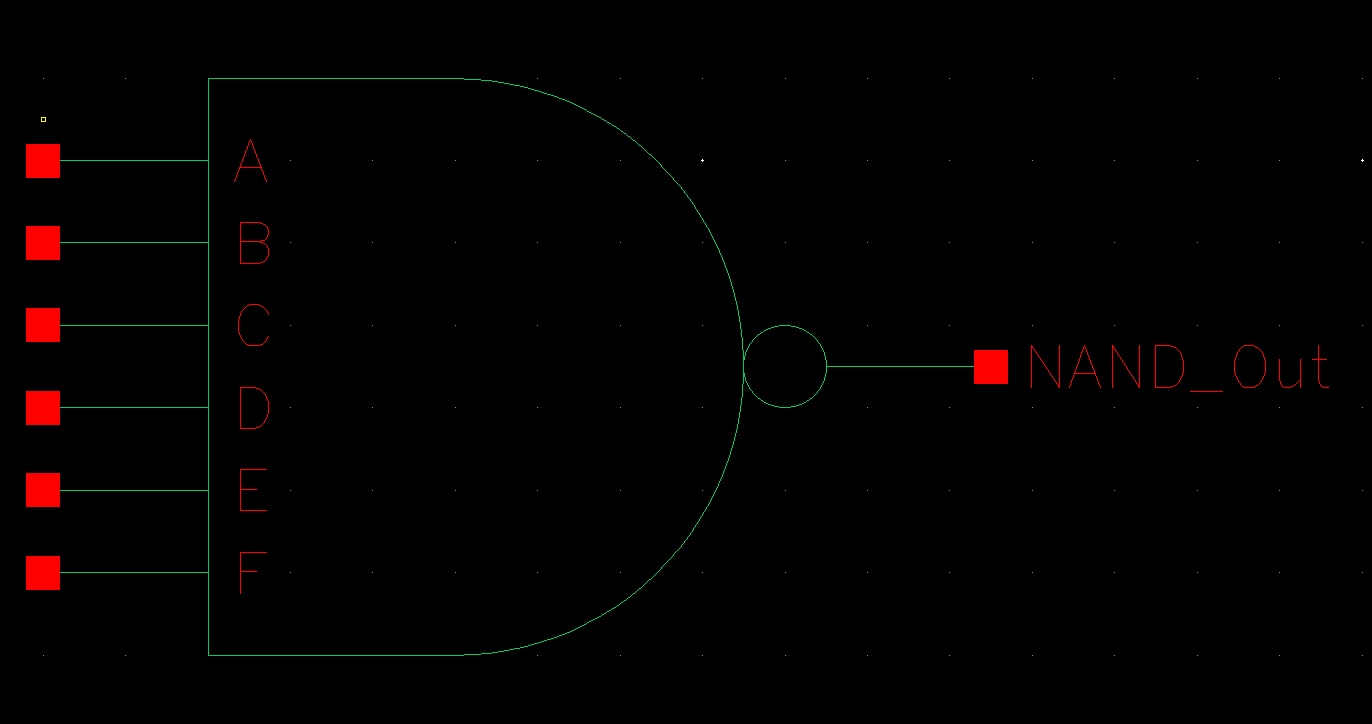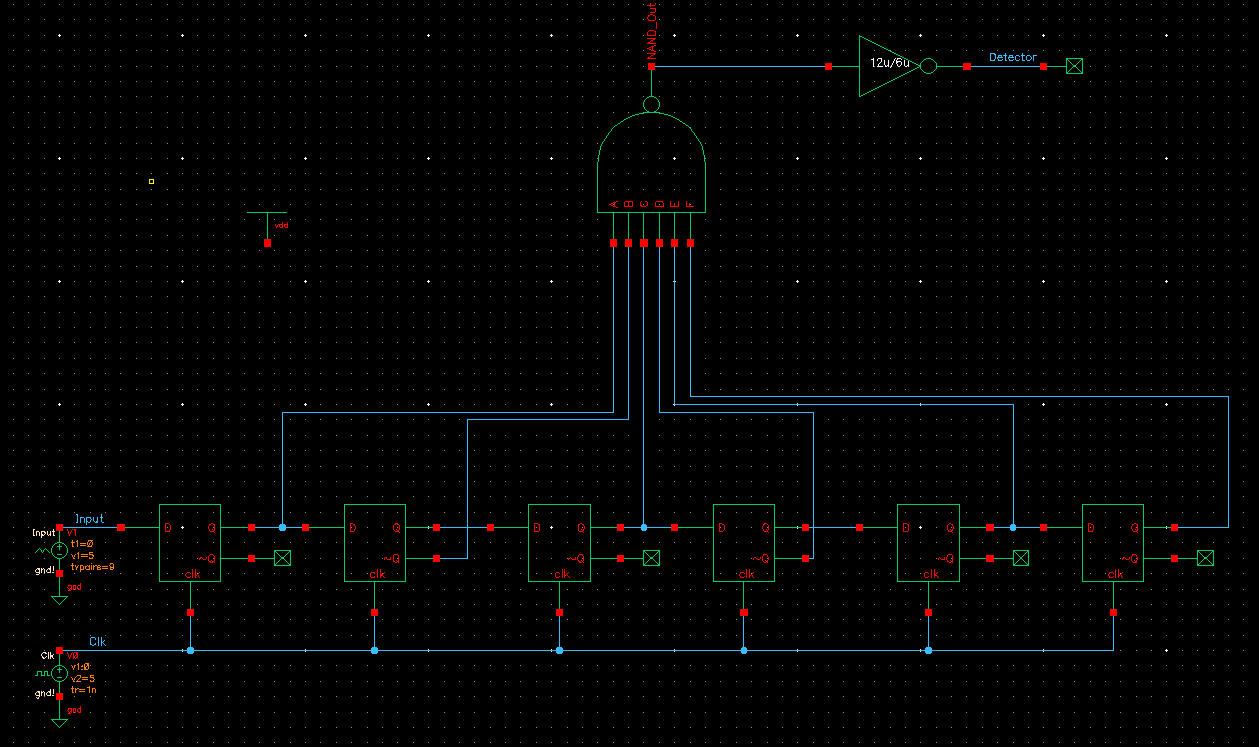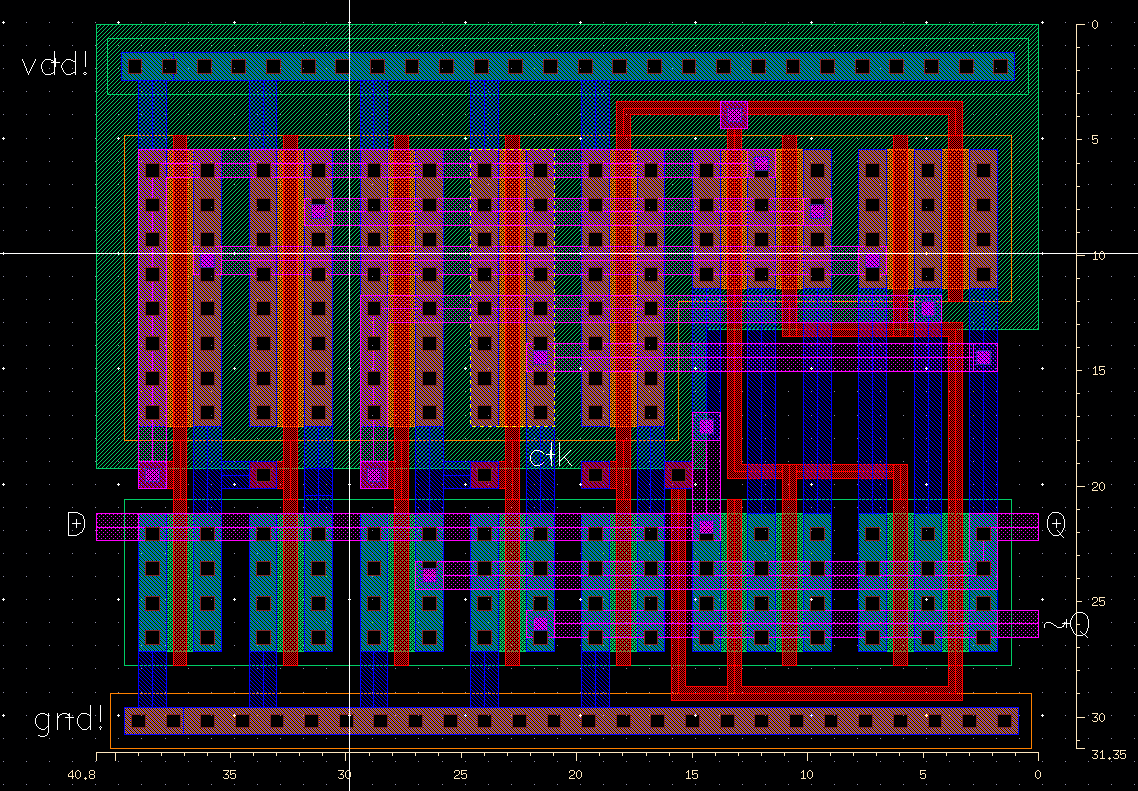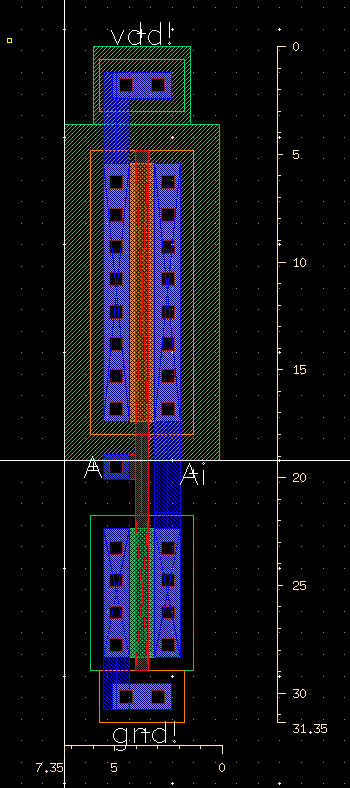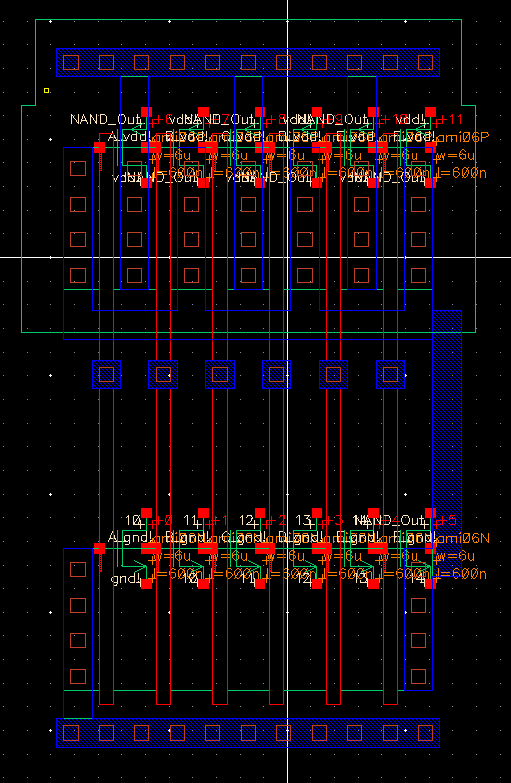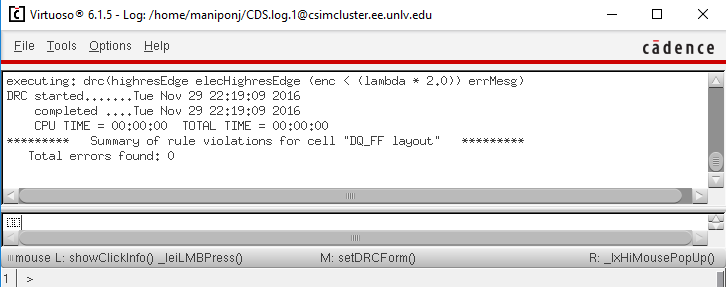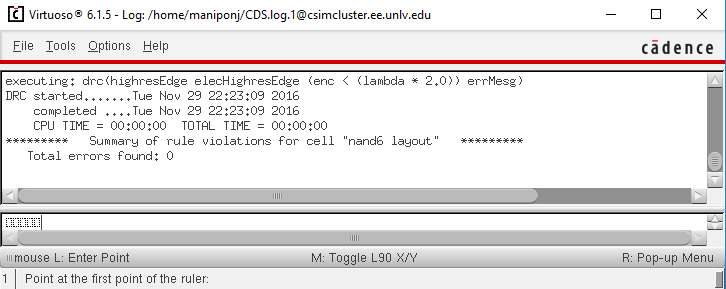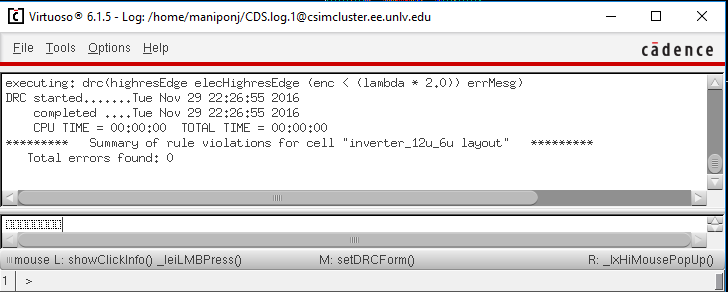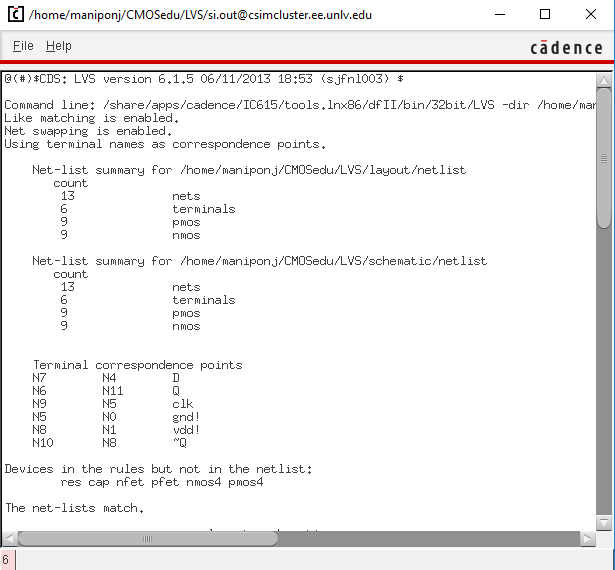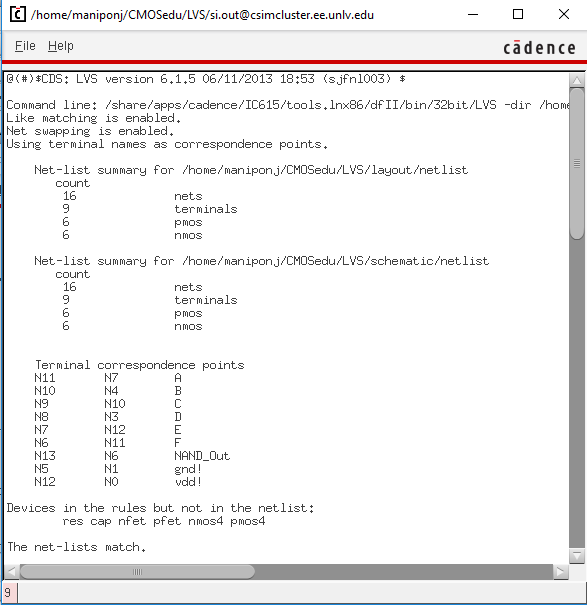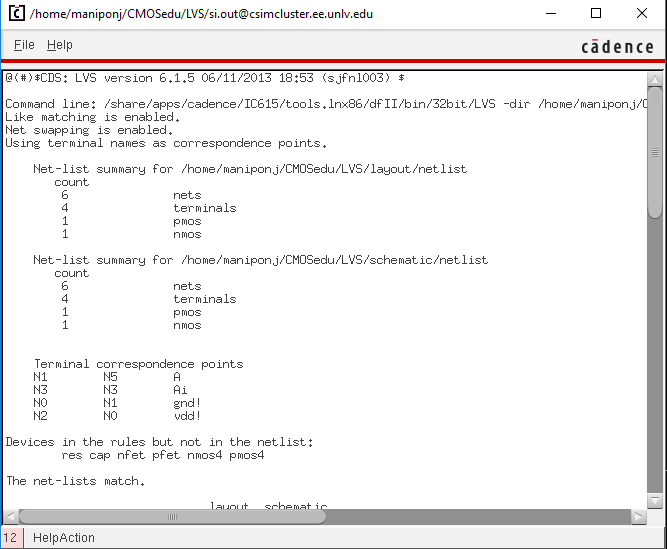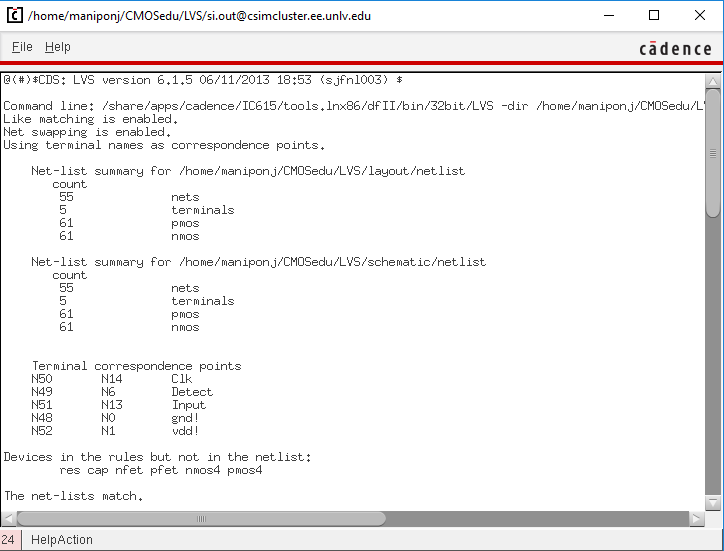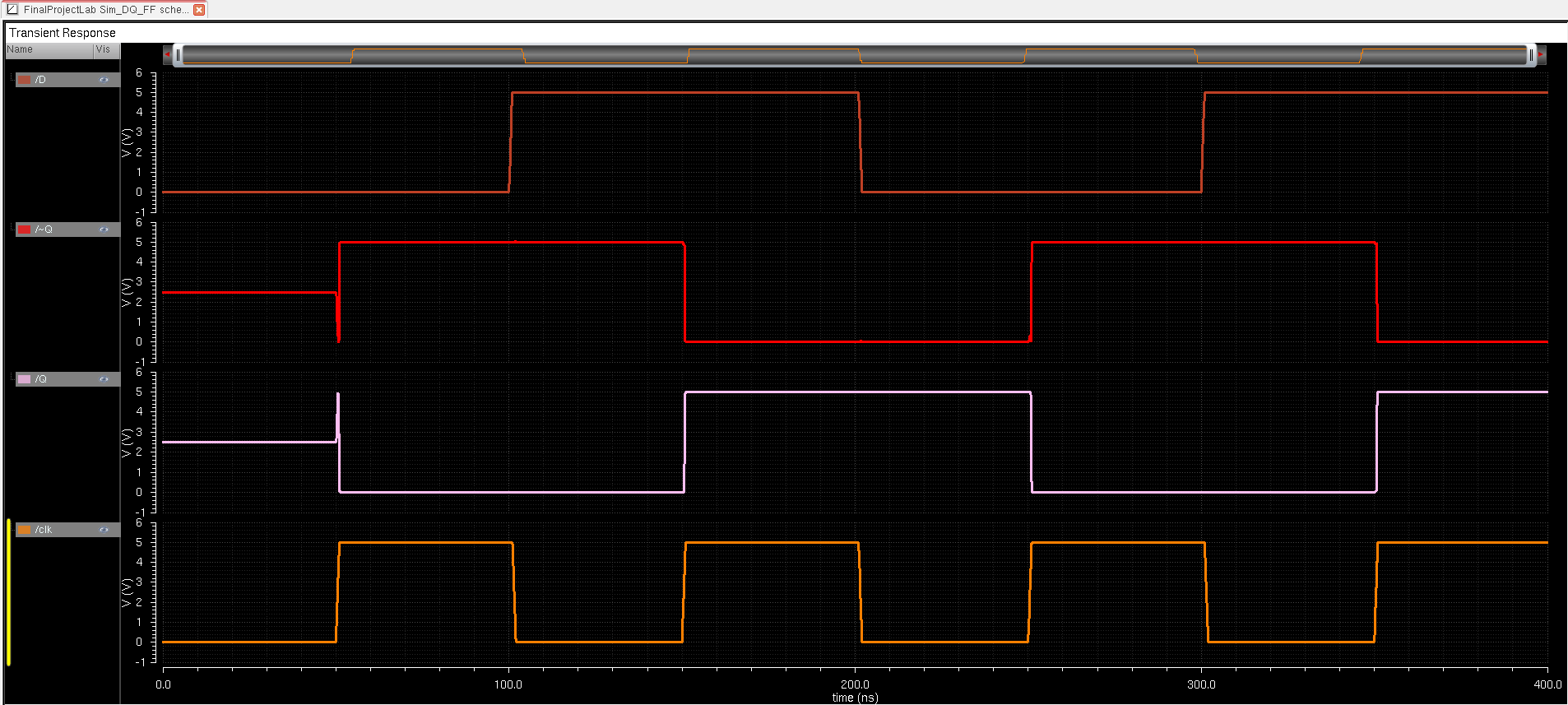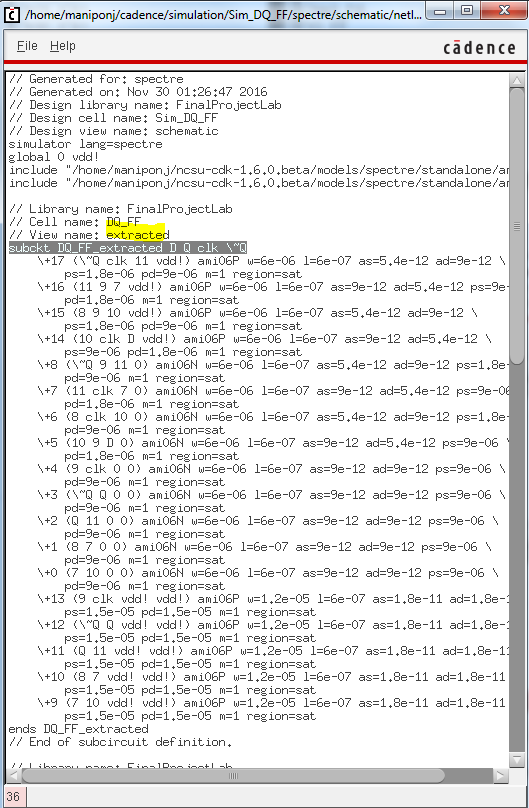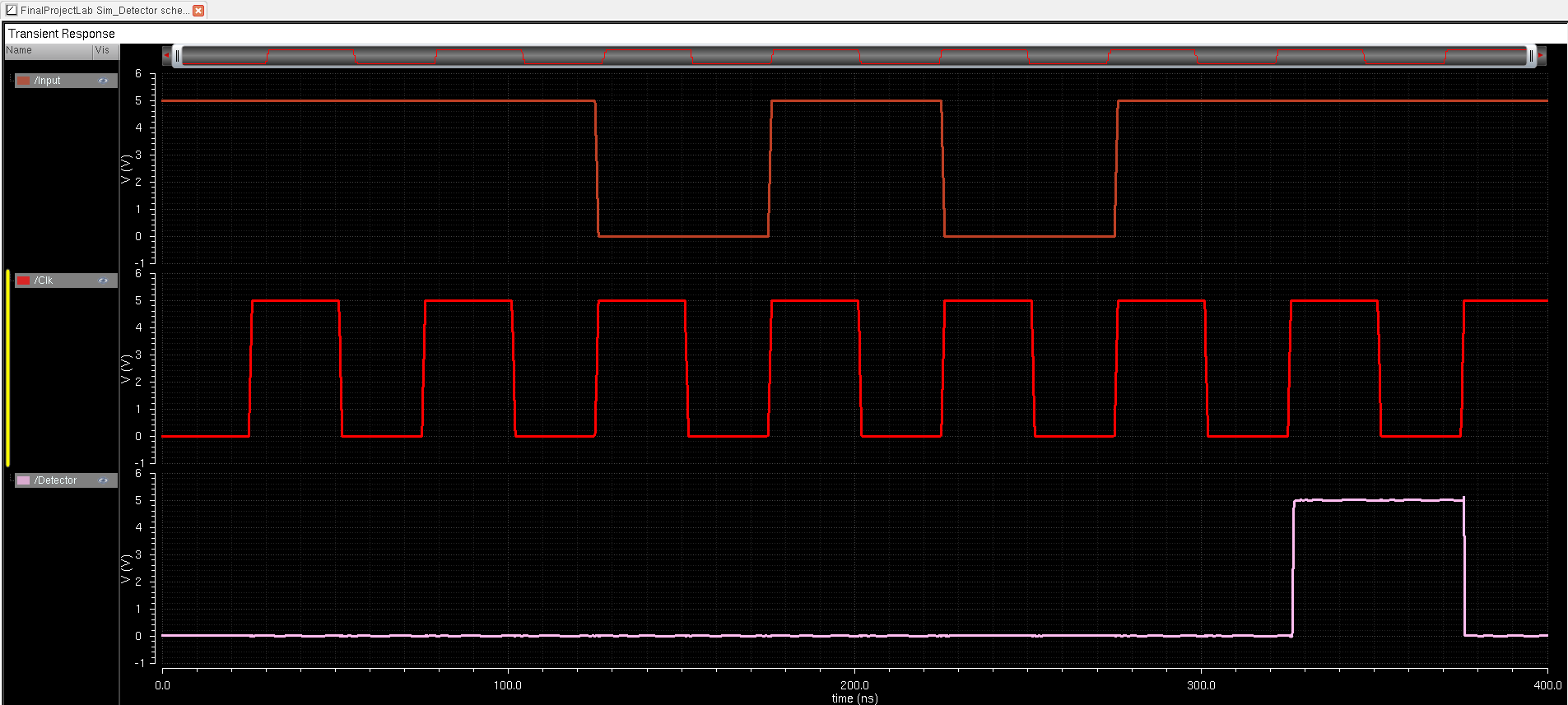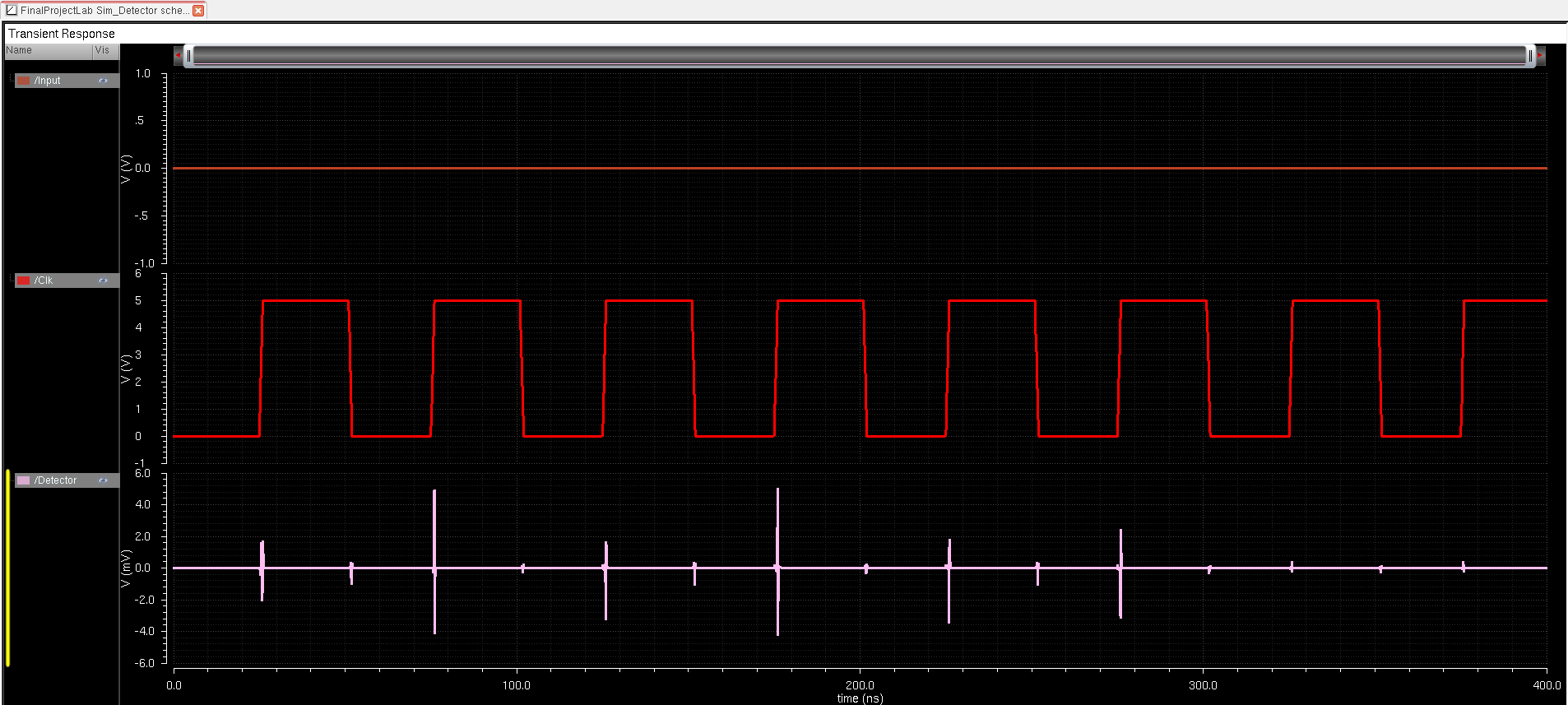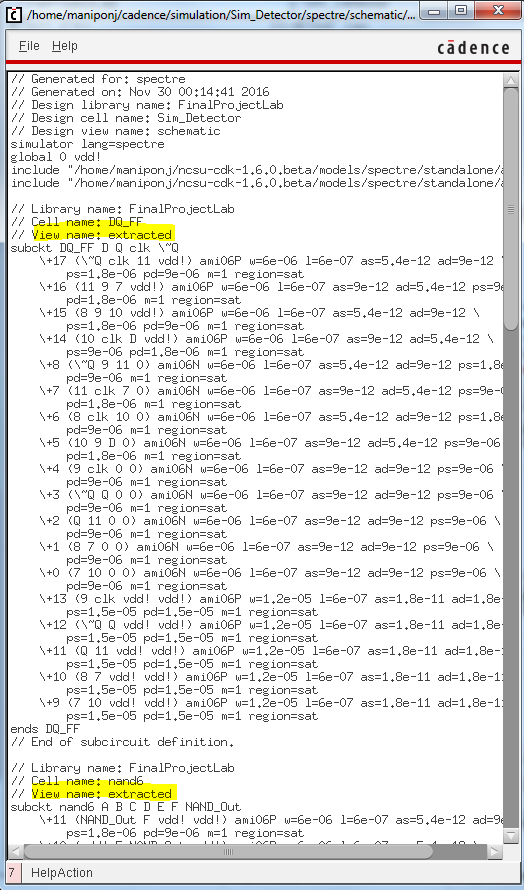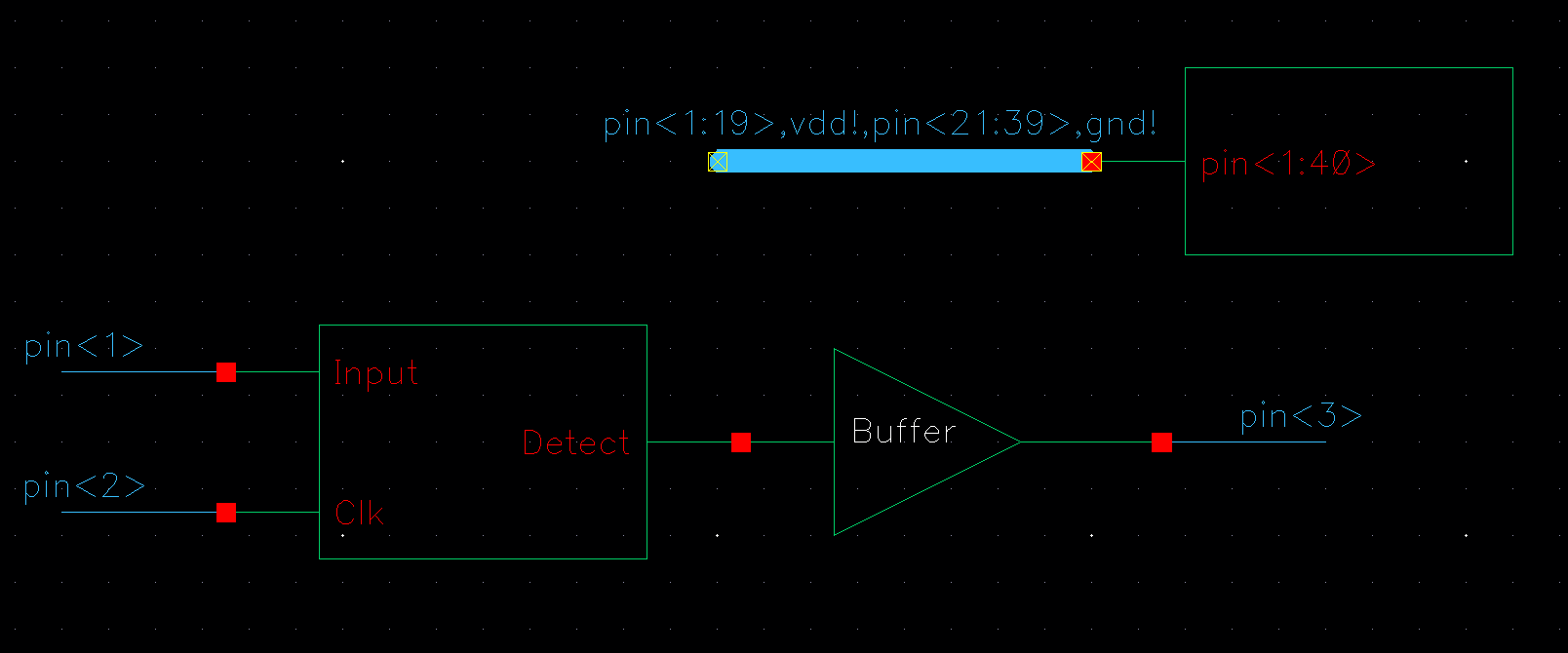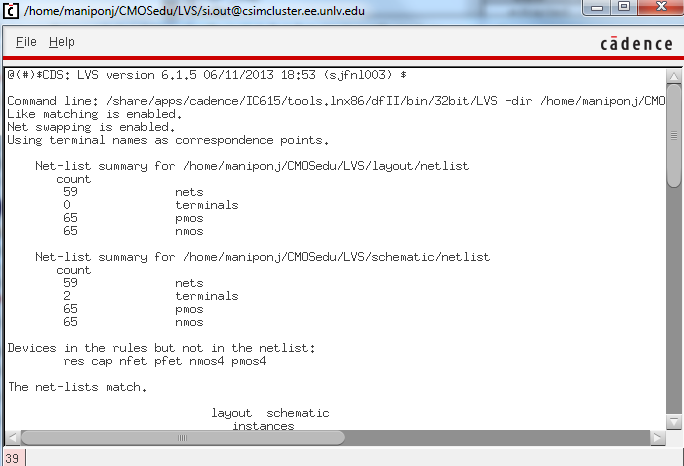| Comments | - The D Flip Flop is organized with all my Inverters on the left side and my Transmission Gates are on the right side. The
inverters are organized left to right based on the schematic. The
Transmission Gates were able to be combined due to the source or drains
were connected based also on the schematic
| - With
the NAND gate, I based it on the previous 2 Input NAND gate from
previous labs. I increased the multiplier to 6 on both the NMOS and
PMOS due to an increase of inputs.
| - This
inverter was created from my previous labs and was needed for the
output of the NAND gate in order to have it output high when the
sequence was detected
|
